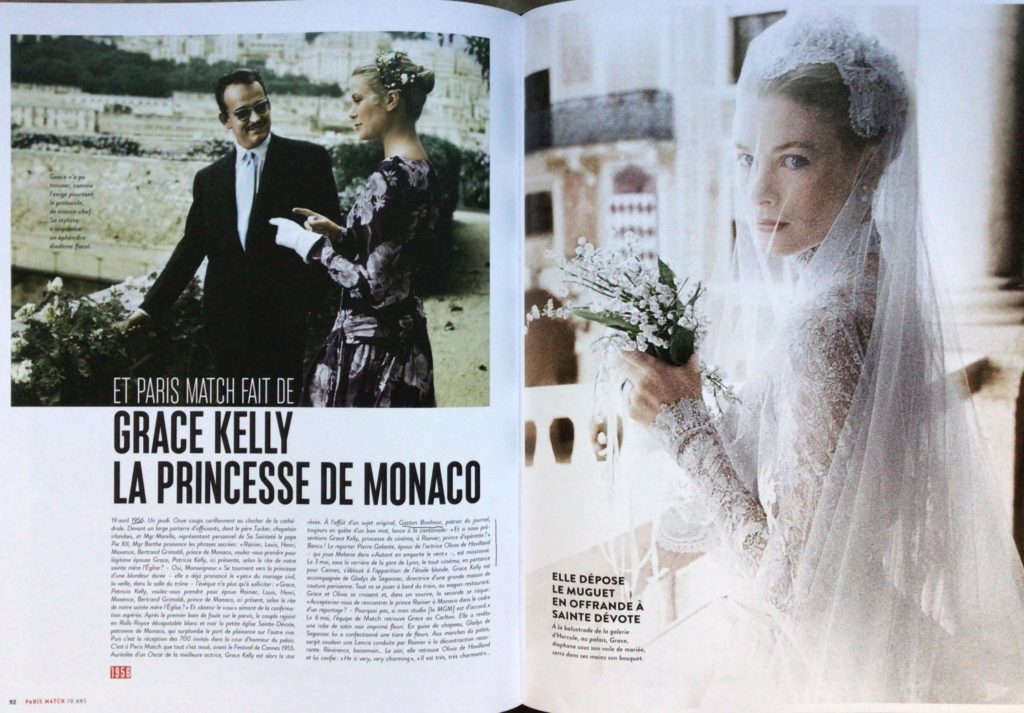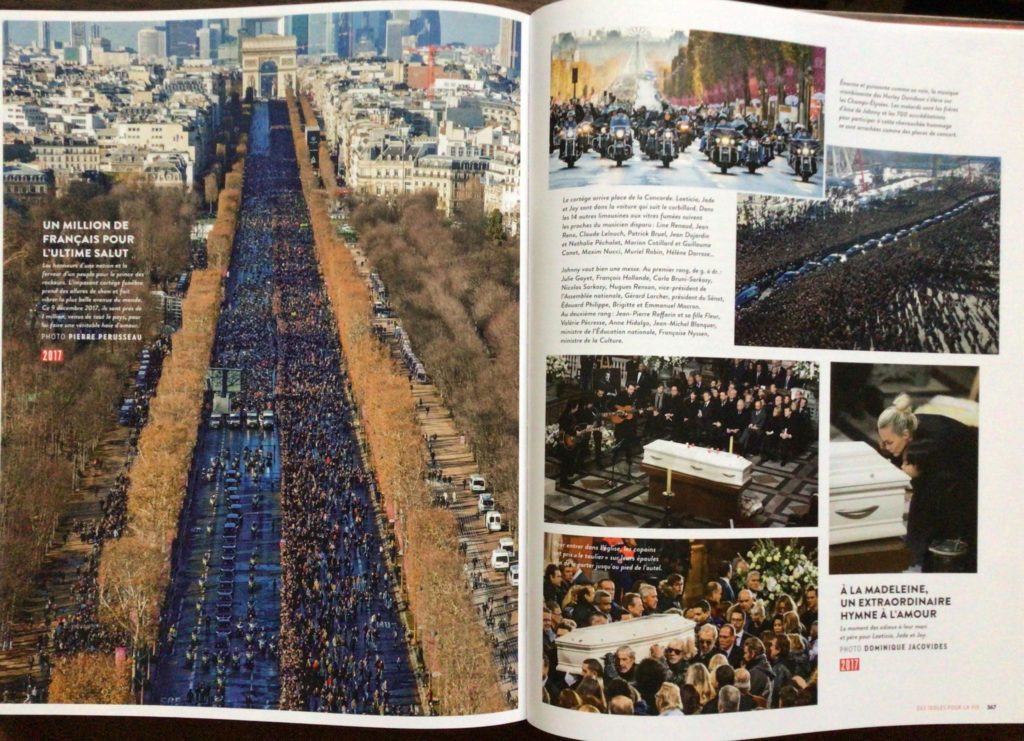Le poids des mots, le choc des photos
(The weight of the words, the shock of the photos) – Paris Match slogan
I have been facing an existential crisis: Whether to resubscribe to Paris Match magazine.
This is the low point of a 25-year relationship with what arguably once was the most important magazine in France. Its photos of war and natural disasters, of royal weddings and rock-star celebrities, were powerful and vivid. Think Life magazine – one inspiration for Match’s founding – in its best years. The investigative articles and scoops caused a stir. And it was an authority on who was up and who was down.
I mostly read Paris Match in hopes it could help me understand this country I was covering. Charlie and I arrived in August 1996 with excellent French vocabularies and a misplaced confidence in our ability to figure things out quickly. Paris Match was a reminder of how much more we had to learn, and a path to greater understanding. It featured cover stories on entertainers we had never heard of (especially dead ones), government officials whose political orientation was opaque and lots of royals, especially from Monaco, who were supposed to be fascinating and left us scratching our heads.
Back then, France was a magazine country. Where on the London Tube you’d see passengers reading The Daily Mail, the Telegraph or the Times, on the Paris Métro they read L’Express, Le Point – or Paris Match. Even by 2014, half of the French read a magazine every day, compared with 42% for a newspaper.

Now, of course, Métro passengers just look at their phones.

Paris Match used to produce big scoops, like the existence of former President Francois Mitterrand’s secret daughter. It brought home such shared experiences as the Algerian War, the 1968 student riots, the death of Princess Diana and the 2015 terrorist attacks in Paris. Its willingness to pay large amounts for great pictures led to the creation of some of the world’s best photo agencies: Sygma, Gamma and Magnum, though its top writers were little-known.
In its heyday, Paris Match – the name has its origins in a predecessor sports magazine – wasn’t just a magazine, it was a kingmaker, literally. Or at least a princemaker. In 1955, with the blessing of the magazine’s editor-in-chief, reporter Pierre Galante introduced Rainier, prince of Monaco, to the Oscar-winning actress Grace Kelly. Galante himself was married to an American actress, Olivia de Havilland, who helped make the connection.
The idea worked. The couple was married the next year. And the wayward offspring of that union – Prince Albert, now ruler of the wealthy Cote d’Azur principality, and Princesses Caroline and Stephanie, and their children, have filled the pages of the magazine ever since. According to a compilation on Wikipedia, members of the Monégasque royal family were featured on the weekly’s cover 251 times between March 1949 and May 2016.

The single-issue cover champion: Johnny Hallyday, the self-styled French Elvis, with 81 cover appearances. Even though he lived in Los Angeles at the end of his life, toured the entire country and had an American relative, the hard-living rocker was almost unknown outside of France. Yet one million people lined the Champs-Elysée in December 2017 to see his funeral cortege, and President Emmanuel Macron gave a speech praising his “undefinable humanity.”

This occasion, like so many I encountered in the pages of Paris Match and in real life, was an only-in-France event. Macron spoke outside the Eglise de la Madeleine because to enter would have, in the minds of voters, violated France’s strict separation of church and state. The president’s wife could make the sign of the cross over Johnny’s coffin. The president couldn’t.
No wonder I kept subscribing.
Paris Match wasn’t just teaching me about France. It was teaching me what about France couldn’t be understood, at least by foreigners. France is what’s called a “high-context” culture: The reader has to bring a lot of knowledge to bear to interpret the information presented.
Where an American newspaper might introduce Nancy Pelosi by saying that she is the Democratic Speaker of the House, a French publication refers to politicians by adjectives. A “mélenchoniste” is a fan of far-left politician Jean-Luc Mélenchon. “On dit place Beauvau” is shorthand for, “Here’s what the Interior Minister is thinking.” Phrases like this appear in French newspapers and magazines with no explanation. In the press, much is said but little is revealed.
But in the past decade or so, even I could tell Paris Match was losing its mojo. The cover subjects were uninteresting, the journalism unenlightening. A piece about far-far- right presidential candidate Eric Zemmour, a married man, showed him frolicking in the Mediterranean with his female 28-year campaign manager but failed to mention that she was his girlfriend.
“I’ve stopped reading it,” said my friend Benoît Laporte, a retired longtime journalist. “I find nothing that makes me think. They kept the photos and lost the words.”
Paris Match now ranks no. 12 in France in terms of paid circulation, mostly behind TV magazines. True, France’s other formerly great magazines are in even worse shape. But it’s hard to see how Paris Match can survive the same forces that have done in magazines around the world.
So did I resubscribe? I did, even though they had cut me off as soon as my subscription ran out, unlike American magazines that carry you for weeks. The first issue I received included an article about a famous author. The cover line said that 18 months after his marriage, he was “going solo.” Inside, the article said his wife didn’t show up to be interviewed with him, giving no explanation. Similarly, Prince Harry and Megan were said to be leaving their mansion in Montecito. Really? You couldn’t learn how or when or any details from Paris Match.

But when the magazine arrives in the mail every Thursday and I recognize who’s on the cover, I feel a sense of familiarity. Paris Match has been part of my journey in France. It was there for me when I needed it and I’m happy to give it a little help now.


Love reading your blog, Anne. Always interesting, unlike Paris Match.
Thanks, Louise!
Very amusing!
Merci, Mary!
As always, right on target! Thank you, Anne.
Thanks, Betsy!
I remember almost being afraid to open it up as some of the photos were so big and shocking !
Indeed, I read somewhere that 70% of the space was devoted to photos.
Thanks for the post. I stuck with news papers. Le Figaro , Le Monde.etc. Even Madame Figaro glanced at by my wife.
Glad you liked it! Le Parisien has always been my favorite newspaper. Fairly unbiased, and news you can use. I did read Madame Figaro from time to time….
In my (long ago) correspondent days, the presence of a Paris Match reporter or photographer was one of the markers of “big” news, from a new Gaddafi pronouncement to some horrific event in Jerusalem or Gaza, or some otherwise stultifying OPEC meetings in Vienna. And in crowds, the Paris Match people seemed to have the most unpleasantly sharp elbows. But, yes, great fun to read and see, even if I needed a decoder ring.
Thanks, Robert! Yes, we all need decoder rings.
Anne, your blog posts are setting the standard for whoever would like to write about France! My dad used to read “Les carnets du Major Thompson” from Pierre Daninos and he used to tell me that only a British person could observe France that way. With both humour and affection. Well I know that an American journalist has mastered that skill as well.
Thanks so much, Jacques! Coming from you especially. I know what you mean about the foreign eye. One of the best books I’ve read about American culture was written by the U.S. correspondent for Le Figaro, Stephane Marchand.